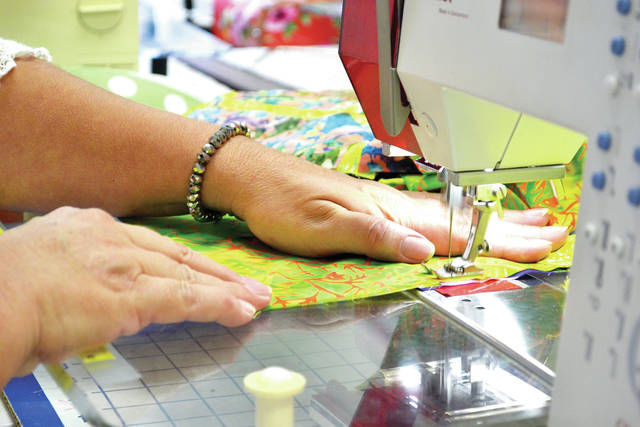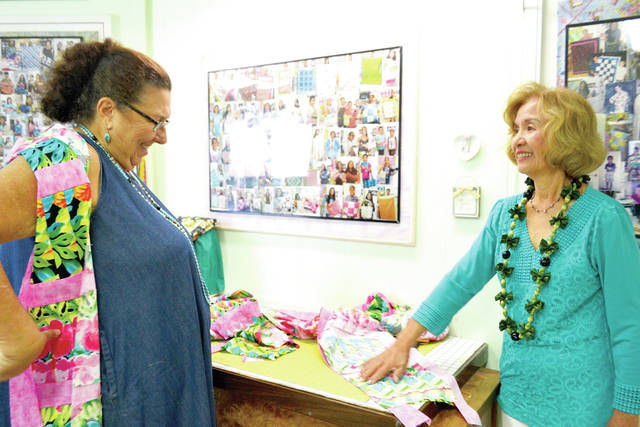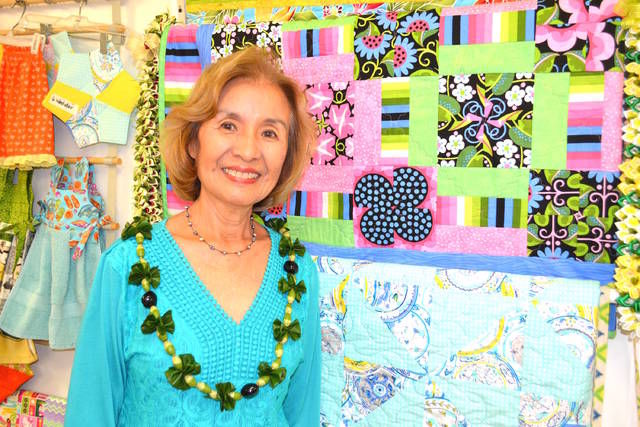If you’re part of the sewing community on Kauai, chances are you’re connected with Eileen Miyasato in some way. For over two decades, the soft-spoken 70-year-old wife, mother and grandmother has opened her Lihue home to over 3,000 students and
If you’re part of the sewing community on Kauai, chances are you’re connected with Eileen Miyasato in some way.
For over two decades, the soft-spoken 70-year-old wife, mother and grandmother has opened her Lihue home to over 3,000 students and continues to teach 10 months of the year.
Her greatest joy in sewing, she says, is passing her knowledge to the next generation of seamstresses and tailors.
Born in Honolulu in 1945, Miyasato lived in Kaneohe and Kailua before moving to Kauai with her husband, Barry, 43 years ago.
What brought you to Kauai?
The church we were attending on Oahu started a church here. Our good friends were going to be the new pastor. We thought we’d come and help them.
What did you do here when you moved?
My husband worked for a bank, then he got a job at the state. He retired after 30 years with the state.
What got you into sewing?
I’ve been sewing since I was 12; so 60 years or so.
Who taught you?
My mom sent me to sewing school when I was in junior high. My mother was a dressmaker, so was my grandmother, and my grandfather was a tailor. I picked it up along the way, and I’ve always loved sewing. I felt like it was a gift God gave me.
I was not the academic-type person, but I loved sewing from a young age. I was already sewing for people by the time I was 19, sewing wedding gowns for friends. I did dressmaking for maybe 30 years, then I got into clothing alterations. I also worked part-time for a school.
One day, one of the customers asked me if I would teach her daughter and her daughter’s friends. The daughter attended Island School where they had no (home economics class), and I said, ‘Yeah, OK, if you get me the students.’ That’s how I got started.
When was that?
That was over 20 years ago. When I decided there was a need for sewing instruction, I decided I needed more room. I took out the wall between two bedrooms and then I took over another room. I already built an extension for this sewing room.
What you first started, how many students did you have?
Well, it was a summer session. I didn’t have students yet. I tore down the wall first, put tile and then I put an ad for sewing students, and it all filled. Back then, they had to bring their own sewing machines. I only had two sewing machines. Later I became a rep for a sewing company on the island, and I was able to purchase machines at wholesale, sell machines, service them and it worked really well. My son does all my servicing.
What’s special about sewing for you?
Teaching especially is very rewarding. You can’t imagine. Sometimes I get teary-eyed just to think that people would come to my home and some come straight from work — from 6 to 9 — and some live in Kekaha. I had a student come from Haena on a Tuesday night class. It’s an investment, but I think they enjoy the camaraderie and the fun and fellowship.
One of my Thursday classes has been together for at least 6-7 years. The same group. One passed. Three of the ladies became widows. They’re very close knit. They really care for each other. It’s more than just the sewing. They can sew these things at home. But it’s so relaxing. The rewarding thing is just to see them creating and enjoying what they’re doing.
How old is your oldest student?
I have two students who are 85 and two sisters are 80 and 83. Those are oldest students.
And your youngest?
I take from 10 and up. That’s what I advertise. If it doesn’t fill, I take 9. I had them all ages. I taught 7-year-olds. My 6-year-old, she’s incredible how she can handle the machine. I put a special finger guard on her machine. She has such confidence. My grandkids love sewing. It keeps them out of trouble.
How many of your family members have you taught to sew?
Three of my sons sew. My oldest does men’s alterations.
My youngest one just sews for the fun of it. They all hem their own pants, and they hem for their wives. I’ve always taught nieces and nephews.
They’d fly over for a couple of weeks during the summer. I call it sewing camp. I teach them sewing, how to cook, how to clean and take them to the beach.
How many classes do you have a week?
This session, I have five and I can take eight students. Most of my classes are full.
How long is each session?
Three hours.
Is that on a weekly basis?
They cover eight weeks, once a week. In the summer, it’s different. I take just kids. They come three times a week, and they get eight classes, too. I take August and December off.
How many students did you have over the years?
I think it comes close to 3,000 — give or take a couple of hundred. I’ve seen them grow up. When I first started my school, being that I was a dressmaker, I only knew how to sew garments. So, everybody sewed garments. They don’t sew garments as much because you can buy garments for pretty reasonable. You can’t always find the type of fabric you want. That’s why they did less and less.
I got more into crafts — all kinds of crafts. Things they can make for gifts. They love quilting. Quilting is it and anybody can quilt. I have beginner quilts where they have never quilted before, and they’ve done great.
Even with manufactured-made products, what is the allure of sewing something or hemming something yourself?
There’s so many benefits. Like Gandhi said, ‘The sewing machine is one of the most important inventions.’ You can create. You can earn. It’s the last piece of furniture you want to get rid of. You keep that machine because it will pay for itself. I found that to be true. It’s brought an income for me, for my family. It’s brought me so much pleasure, and the greatest joy has been to be able to pass it on to the next generations.
I’m passing it on to my children, my grandchildren and they’re teaching some of theirs. It’s just a wonderful, wonderful thing. It’s just a gift that goes on and on.
I’ve thought the possibility of going to the Boys & Girls Club and getting more machines and having them come here. I would say 10 or 15 years ago, I used to teach single moms and their children. I get donated fabrics and I just teach them for no charge. It was great. Some of them continued, and now some of them are mothers and fathers.
When I look back, I think of the blessing of being home and always having my children and my grandchildren around me.
As I was growing up, I was always able to earn money being a dressmaker. Sewing is for anybody. My number two son likes to do upholstery, so he uses a power machine which I have here. He’s created a lot of things for his own. He’s very adept with a machine. I taught a lot of men in the past.
The conception is more women sew. Do you see more men sewing nowadays?
Boys don’t tend to come as often. I’ve had brothers and sisters come. As a whole, it’s more women. But all the tailors are men. It’s nothing to be ashamed of. It’s like any skill.
One of my desires is to become a carpenter. I see similarities. I have a couple of students who are carpenters.
They are also quilters and sewers, and they’ve built kitchen cabinets and one has built her home.
When you have a new session, how do you begin?
I have an orientation. I layout all the projects they can make. I go through a material list.
I go through all the supplies and things that they’ll need — their tools — and tell them of the four fabric stores they can shop at. Three of them give them discounts during the session.
How do you work with intermediate and advanced students?
At that point, many of them have their own idea of what they want to do. I have a youngster about 12, and she found out that she likes to sew clothes, and she likes to do the stretchy fabrics. She’s getting to be very good at that. There’s a market for that if she continues.
What do you say to anyone interested in sewing?
Try it. You might like it. I often have mothers that force their kids to come. They’re so nervous on their first day. When they see they can create something, then it gets to them and they start wanting to continue.
Is there anything else you would like to add?
I just would like to continue to sew, but I have so little time because I have a clothing alterations business. I mainly do formals, but I’ll take other things as time allows. I specialize in emergencies and things like that. Prom season is upon us, and I get zapped with tons of alterations, but I enjoy doing it.




